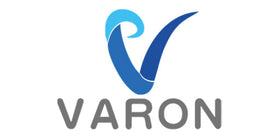What are the Signs that You Might Need Oxygen Therapy?
CODE
For most of us, breathing is an automatic process we hardly think about. Our lungs take in oxygen, vital for our cells' energy production, and expel carbon dioxide waste. However, for people with respiratory disorders, breathing can become a struggle. This blog from VARON UK, a supplier of oxygen generator and home oxygen concentrators and portable breathing machines, will explore the signs that indicate you might need supplemental oxygen therapy and answer what are the symptoms of getting too much oxygen.
When Difficulty Breathing Becomes a Reality
Millions of people worldwide live with respiratory conditions that make breathing difficult. These conditions can include chronic obstructive pulmonary disease (COPD), asthma, pneumonia, and cystic fibrosis. While medications and inhalers can help manage these conditions, sometimes the body requires additional oxygen support. This blog will discuss the key signs that might indicate the need for a home oxygen concentrator or portable breathing machine and highlight what are the symptoms of getting too much oxygen from concentrator.
Symptoms of Low Blood Oxygen
Many people experience occasional shortness of breath during strenuous activity. However, some symptoms become red flags when they occur frequently or even at rest. Here are some signs that your body might not be getting enough oxygen:
-
Frequent Shortness of Breath: If you find yourself gasping for air even during minimal exertion like walking or talking, it could be a sign of low oxygen levels. Also, understanding what are the symptoms of getting too much oxygen can help prevent complications.
-
Rapid Breathing and Racing Heart: When your body struggles to take in enough oxygen, it compensates by increasing your breathing rate and heart rate. Being aware of symptoms of too much oxygen from concentrator is important to avoid health risks.
-
Persistent Cough and Sweating: A chronic cough that doesn't respond to treatment, along with unexplained sweating, could be a sign of underlying respiratory issues affecting your oxygen intake.
-
Confusion: When oxygen levels drop, it can impact cognitive function. Likewise, excessive oxygen can cause what are the side effects of being on oxygen, such as dizziness, headache, or confusion, emphasizing what are the symptoms of getting too much oxygen.
Main Indicators That You Might Need Oxygen Therapy
While some symptoms are subtle, others are more pronounced and require immediate medical evaluation. Here are some key indicators that supplemental oxygen therapy might be necessary:
-
Shortness of Breath During Normal Activities: If even simple activities like walking or climbing stairs leave you breathless, it's a strong sign you might need oxygen therapy.
-
Racing Heart Rate While Walking Slowly: Your heart rate shouldn't significantly increase during slow walking. If your heart races while walking at a leisurely pace, consult your doctor to rule out oxygen deficiency.
-
Low Blood Oxygen Saturation: A pulse oximeter, a small clip-on device, can measure your blood oxygen saturation. Generally, a healthy level is above 95%. If your oxygen saturation falls below 88% while resting, your doctor might recommend home oxygen concentrator use.
-
Daytime Sleepiness and Nighttime Issues: Excessive daytime fatigue, difficulty falling asleep, or waking up with headaches or confusion could be signs of nighttime oxygen level drops. Discuss these symptoms of too much oxygen from concentrator with your doctor.
-
Blue-Tinged Fingers or Lips: This bluish discoloration, known as cyanosis, indicates severely low blood oxygen levels and requires immediate medical attention.
-
Edema (Swelling) in Ankles or Feet: Swelling can be caused by low oxygen levels affecting kidney and liver function.
-
Ineffective Inhalers: If your current inhaler treatment isn't providing sufficient relief for your respiratory condition, your doctor might recommend oxygen therapy as a more effective solution.
What is Oxygen Therapy?
Oxygen therapy is a treatment that provides a supplemental source of oxygen to individuals with respiratory disorders who struggle to get enough oxygen from the air. It comes in two main delivery methods:
-
Oxygen Tanks: Portable oxygen tanks contain compressed oxygen, but they require refilling and can be a fire hazard.
-
Home Oxygen Concentrators: These stationary or portable breathing machines draw oxygen from the ambient air, filter it, and deliver a continuous supply of concentrated oxygen through a nasal cannula.
Both methods require proper monitoring to prevent overdose. VARON UK guides patients on safely managing oxygen therapy, including understanding what are the symptoms of getting too much oxygen.
Who Needs Oxygen Therapy?
Respiratory illnesses that reduce oxygen purity include:
-
Chronic Obstructive Pulmonary Disease (COPD): Progressive lung disease requiring poc oxygen.
-
Pneumonia: Can reduce purity levels significantly.
-
Asthma: Severe attacks may require a portable oxygen concentrator uk.
-
Cystic Fibrosis: A genetic disorder impacting oxygen generator efficiency.
Benefits of Oxygen Therapy
Oxygen therapy offers a range of benefits for individuals with respiratory conditions:
-
Reduced Headaches, Fatigue, and Irritability: Low oxygen levels can cause headaches, fatigue, and mood swings. Oxygen therapy can alleviate these symptoms, improving your overall well-being.
-
Improved Breathlessness and Sleep: Supplemental oxygen can significantly improve shortness of breath, allowing you to be more active and sleep more soundly.
-
Enhanced Quality of Life: By managing your symptoms and improving your breathing, oxygen therapy can significantly enhance your quality of life.
Benefits of Home Oxygen Concentrators
-
Compared to oxygen tanks, home oxygen concentrators offer several advantages:
-
Safer: Unlike oxygen tanks, which contain pressurized gas and pose a fire hazard, home oxygen concentrators draw oxygen from the surrounding air, eliminating any risk of explosion.
-
Easier to Use: Concentrators are relatively simple to operate and maintain. They offer a continuous oxygen generator supply, unlike tanks that require refilling.
-
More Compact and Portable: Many home oxygen concentrators are compact and lightweight, making them easier to move around the house or even travel with. Some models are even portable enough for short outings.
-
How Oxygen Therapy Helps with COPD
COPD (Chronic Obstructive Pulmonary Disease) is a progressive lung disease that makes breathing difficult. Oxygen therapy plays a crucial role in managing COPD by:
-
Providing Supplemental Oxygen: By delivering concentrated oxygen, therapy helps improve oxygen levels in the blood, easing shortness of breath and fatigue.
-
Managing Flare-Ups: During COPD flare-ups, oxygen therapy can be critical in stabilizing your breathing and preventing complications.
-
Maintaining an Active Lifestyle: With proper oxygen therapy and doctor-prescribed levels, you can manage your COPD and continue to enjoy an active lifestyle.
The Science Behind Oxygen Concentration: Pressure Swing Adsorption (PSA)
PSA concentrators work by:
-
Air Intake: Draw in ambient air (~21% oxygen).
-
Zeolite Beds: Filter nitrogen, enhancing oxygen purity.
-
Nitrogen Absorption: Produces poc oxygen with ~90-95% purity levels.
-
Oxygen Enrichment: Delivered through oxygen nebulizer or nasal cannula.
-
Pressure Release: Nitrogen released back safely.
-
Continuous Cycle: Ensures ongoing poc oxygen supply.
PSA benefits include:
-
Efficient oxygen generator performance.
-
Cost-effective long-term therapy.
-
Portable options for portable oxygen concentrator uk users.
How to Raise Blood Oxygen Levels
Simple lifestyle changes improve oxygen purity and purity levels:
-
Improved Posture: Helps poc oxygen flow efficiently.
-
Fresh Air Intake: Improves oxygen nebulizer effectiveness.
-
Proper Hydration: Supports better oxygen generator output.
Frequently Asked Questions (FAQs)
1. Q: What are the early signs of too much oxygen?
A: Early signs can include headache, dizziness, nausea, confusion, or shortness of breath. Symptoms of too much oxygen from concentrator should be monitored closely.
2. Q: How can I safely monitor oxygen levels at home?
A: Use a pulse oximeter and follow your doctor’s prescribed oxygen flow rate to prevent over-oxygenation from home oxygen concentrators or an oxygen generator.
3. Q: Can overusing oxygen cause long-term effects?
A: Yes, excessive oxygen can damage the lungs, reduce CO2 levels, and cause fatigue or cognitive issues, which are some of the side effects of being on oxygen.
4. Q: Are portable oxygen concentrators safe for daily use?
A: Yes, when used correctly and monitored for proper oxygen flow, portable oxygen concentrators are safe and effective for long-term therapy.
5. Q: How long can you live on oxygen at home safely?
A: With proper supervision and the use of home oxygen concentrators or an oxygen generator, patients can maintain a safe and healthy lifestyle for years.
Choosing an Oxygen Concentrator
If your doctor has recommended oxygen therapy, VARON UK can be your trusted partner in choosing the right equipment for your needs. We offer a wide range of home oxygen concentrators and portable oxygen concentrators, ensuring you find a portable breathing machine that fits your lifestyle and medical requirements. Our expert staff can guide you through the selection process and answer any questions you might have, including how long can you live on oxygen at home safely with proper supervision.
VARON UK offers home and portable oxygen concentrators and expert guidance to safely manage oxygen therapy. Knowing what are the symptoms of getting too much oxygen ensures your therapy is both effective and safe.































